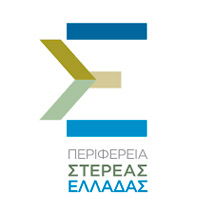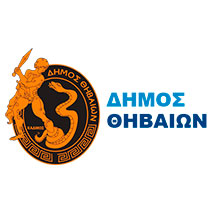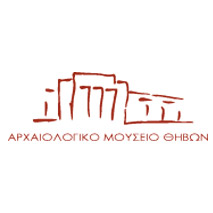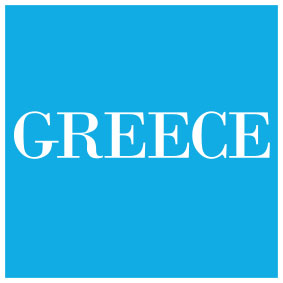PRESS RELEASE
The Region of Central Greece implements one of the major projects for promoting the use of cultural sites, enhancing of tourism and strengthening entrepreneurship in Central Greece, the “Oedipus Cultural Route“. To achieve this, the Cultural Route is supported by the new financial mechanism called Integrated Territorial Investment (ITI).
“Oedipus Cultural Route” aims to establish a comprehensive and branded “product” of cultural tourism, so as to present the Region as a quality and recognized tourism destination, through smart promotion, utilization of cultural – natural resources and networking of its manpower.
To this end, a journey of nature and culture has been designed, featuring 7 alternative starting points, 7 poles of attraction, which encompass the history and tradition of Central Greece and offer visitors internal tours to local networks with iconic monuments, journeys in space and time.
The poles meet specific criteria: a) they are renowned for their cultural and environmental value, b) they are tourist attractions, c) they can provide a high-quality service to visitors, d) they can serve as starting points for various internal routes.
The 7 main πολεσ (Chalkida-Eretria, Thiva, Orchomenos, Delphi-Parnassos, Thermopylae, Karpenisi and Skyros) together with the respective entry axes, internal networks and interstations, give travelers the opportunity to choose their desired combination of routes within a trip depending on the experiences they want to enjoy, as the “Route” offers additional tours and activities (e.g. gastronomy, events, nature and adventure tourism, religious tourism, sun and sea tourism, city tourism, ski tourism, wellness tourism).
The “Route”, with a total length of 300km, provides a field of exploration of more than 15,000 square kilometres, with rich experiences for all five senses, offering many opportunities for spiritual and physical rejuvenation for all seasons, waiting to be discovered and highlighted.
The “Oedipus Cultural Route” provides access, among others, to:
- 2 UNESCO World Heritage Sites (the Archaeological Site of Delphi and the Monastery of Osios Loukas)
- more than 1,000 declared archaeological sites and monuments of all periods (prehistoric, ancient, medieval and modern monuments) and types (settlements, theatres, temples, fortifications, industrial buildings, etc.)
- 40 museums, 19 of which are archaeological and collections, while the rest 21 are thematic (folklore, history, natural history, etc.)
- 16 designated traditional settlements.
- a large number of protected areas such as 3 nature reserves, 2 National Parks, 27 areas of outstanding natural beauty and 37 hiking trails.
- 91 thermometallic sources, a number that corresponds to about 1/5 of the total thermometallic sources throughout Greece.
- 2 ski resorts with strong tradition and national-wide reach
- lengthy coastlines with bays and beaches, 21 of which are awarded the Blue Flag, ideal for swimming, water sports and similar leisure activities.
- major protected water resources, such as lakes, rivers, estuaries, wetlands, etc., whilst recreational activities are offered at 5 sites.
- more than 200 sites of religious interest
- at least 15 events of wider reach
- 11 products of Protected Designation of Origin (P.O.P.) included in the cart of the Region of Central Greece
In order to promote the Route and the wider region of Central Greece as a quality and renowned destination, a common vision and effort will be required to improve the quality of services and products offered. Local businesses of Central Greece play a key role in this initiative and their involvement will link the monuments of nature and culture with the local community, offering visitors unforgettable experiences through a quality tourism product.
In particular, a joint action – which we call Local Development Pact – where local entrepreneurs will cooperate with each other and with the Region of Central Greece, based on a a voluntary agreement that firstly creates a sense of trust and aims to build a large network of businesses along the cultural route with which tourists will come directly in contact – accommodation, restaurants, shops – as well as the businesses that supply them with products or services.
The main features of the Pact are:
It is targeted at professionals, businesses, organizations and institutions of private, community and public character, related to the “Route” and willing to cooperate on a voluntary basis, focusing on quality, in order to promote the Route and the wider region of Central Greece as a destination, with a common vision to improve the quality of the services and products offered.
The aim is to establish a strong network that will operate according to the rules of the Pact, while its members, both individually and -mainly- through synergies, will acknowledge the local development strategy, incorporate elements of local identity in their policies and operations and contribute to the establishment of the Route’s brand name. At the same time, each member acts as an ambassador for other members and the region.
Members’ involvement in the Pact is voluntary and free of charge for the first two years. The eligibility criteria do not discourage smaller companies from joining the Pact, but on the contrary they “reward” them, insofar as they adopt a strategy of change and self-improvement.
Each member’s contribution is valued not only by financial indicators, but also by the active effort to integrate innovation, digital technology and local, cultural elements and other inputs into the operation of a business.
“Small” and “big” are a unified whole, inspired and working towards the same goal. The governance structure of the Local Development Pact itself ensures a dynamic balance that forces the private and public sectors to work together for the purposes of the intended networking and the establishment of the Route.
Visitorsfollow the route guided by special signage that leads them to the monuments and attractions, while the businesses participating in the network can be recognized by visitors thanks to a special sign displayed in their front door.
A digital application (App) on the visitor’s smartphone provides a map and explanatory texts that help the visitor identify the monuments and businesses they encounter or that are located within their route.
The Region of Central Greece incorporates and finances this effort through the ITI, participates as a leader along with key stakeholders in the governance of the project “Oedipus Cultural Route” (SETE, Marketing Greece, Diazoma Association, Agrifood Partnership of Central Greece and others) and has designated its company, Development Agency of Evia SA, as the operator of the route.
For any information or clarification, local businesses of Central Greece, who want to participate in this joint effort, can contact the Development Agency of Evia SA, either by phone at 22210-26626 and 22210-89706 or via FAX at 22210-77747 or via email at diadromi@anevia.gr
For the Operator
The Chairman of Development Agency of Evia SA
Evangelos Koukouzas






